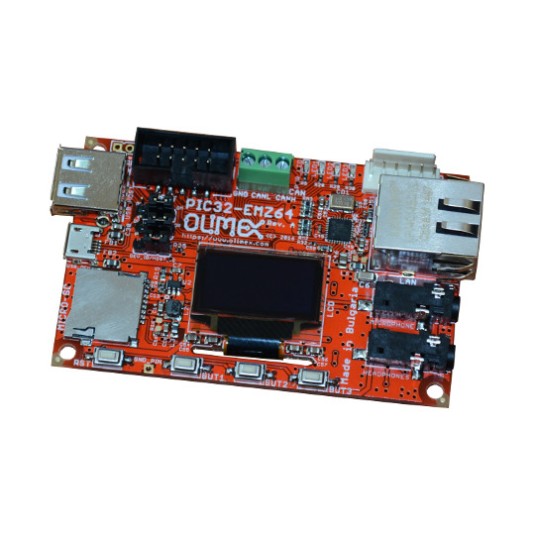PIC32-EMZ64 is board which we will give away next week at Embedded World to the pre-registered developers.
You can win this board! To participate in the Quiz is enough to re-tweet the Twitter Quiz announcement message.
To double your chances you have to answer the Quiz question ![]()
The Quiz question is: Which type capacitor is better to use in RF circuit C0G or NP0?
You have time to re-tweet and/or answer until Monday 22nd of February.
In Monday we will post the correct answer and ask random.org to generate random number in range then announce the winner and ship the board by post/airmail.
Good Luck!

Feb 19, 2016 @ 16:56:39
NP0
Feb 19, 2016 @ 16:58:08
Cause is used in Microwave technology
Feb 19, 2016 @ 16:57:20
NP0 Type is better
Feb 19, 2016 @ 16:59:15
Or we talking for the same capacitor with different names?
Feb 19, 2016 @ 17:50:35
I follow Stan thought, they are the same type of capacitos but with different names, so both of them are ok for RF circuits
Feb 19, 2016 @ 17:56:57
Almost got me there, COG is the same as NPO 🙂
Feb 19, 2016 @ 18:01:37
They are the same.
C0G is the EIA-RS-198 code and NP0 is the IEC/EN 60384-8/21 code for a capacitor with a temperature coefficient of (0 +/- 30 ppm/K).
Feb 19, 2016 @ 18:16:57
NP0 is the same as C0G, this is a capacitor of choice due to its stability in wide temperature range and almost no aging effect.
Feb 19, 2016 @ 18:30:21
Its the same cap 🙂
Feb 19, 2016 @ 19:43:26
Yes It ‘is the same , N0P is the ceramic name and C0G the EIA letter code
Feb 19, 2016 @ 23:12:58
it is the same
Feb 20, 2016 @ 09:54:36
C0G and NP0 are the same.
Feb 20, 2016 @ 14:05:01
Both are the same.
Feb 20, 2016 @ 15:13:38
Ceramic chip capacitors with COG and NPO dielectric types are the same.
Feb 20, 2016 @ 18:45:06
The’re the same type !!!
The C0G is the EIA letter code for the type NP0
Feb 21, 2016 @ 13:47:11
C0G and NP0 are the same. They use the same dielectric.
Feb 21, 2016 @ 14:07:10
CGO and NPO is the same. It describes the type of dielectric.
Feb 21, 2016 @ 23:29:06
After reading about ceramic capacitors on Wikipedia for a while i realized that the answer is written here in the comments already :-D.
The following is mostly from the Wikipedia page about ceramic capacitors:
“NP0” is the ceramic name for a Class 1 capacitor * with a temperature coefficient of zero ( negative-positive-zero == NP0) while “C0G” is the EIA letter code for the same capacitor. For the letter code C0G that is:
C: 0.0 (temperature coefficient)
0: -1 (multiplier of the temp coefficient)
G: +/- 30% (tolerance of the temp coefficient)
To answer the question: Both names refer to a class 1 capacitor which are used in rf circuits because of their ” accurate frequency response over a wide temperature range ” and “very small tolerances of the rated capacitance”.
Best wishes,
Matthias 😀
* Class 1 ceramic capacitors offer high stability and low losses for resonant circuit applications. Definition regarding to IEC/EN 60384-1 and IEC/EN 60384-8/9/21/22
Feb 22, 2016 @ 10:05:34
They’re the same, just different codes
Feb 22, 2016 @ 14:27:03
The ceramic name is NP0, the EIA letter code is C0G so I say NP0 is the one I would choose and order it via their EIA letter code C0G. 😉
Feb 23, 2016 @ 19:17:58
Same type of capacitors.
Feb 24, 2016 @ 00:34:39
Yup it’s the same cap! 🙂
Mar 02, 2016 @ 18:38:03
demos using and OPEN SOURCE graphical programming tool can be found on http://www.sim2tronic.com